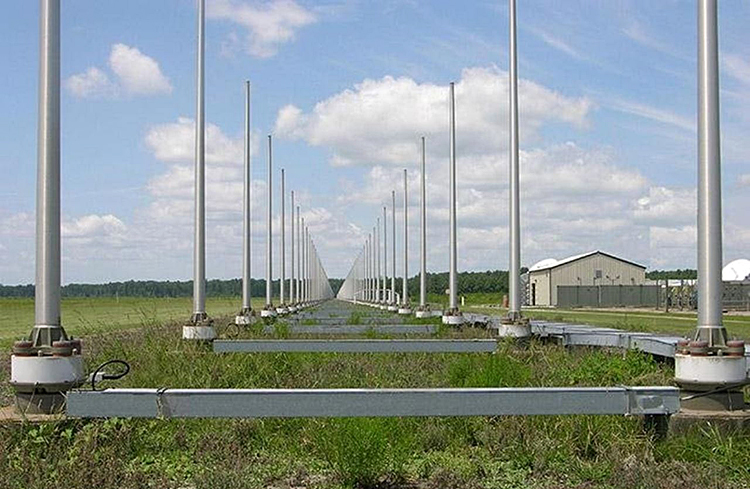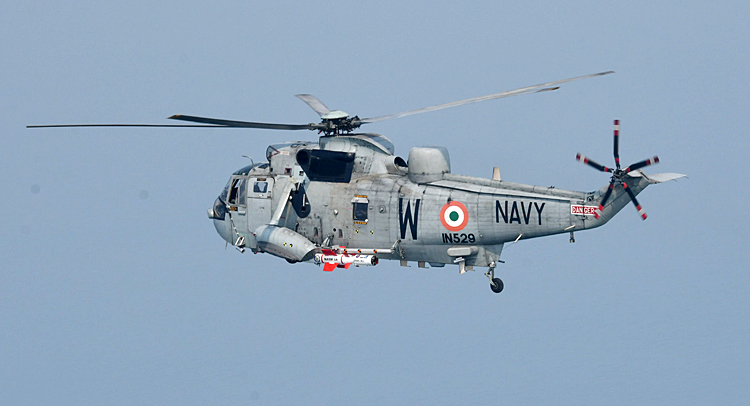INDIAN ARMED FORCES CHIEFS ON OUR RELENTLESS AND FOCUSED PUBLISHING EFFORTS

The insightful articles, inspiring narrations and analytical perspectives presented by the Editorial Team, establish an alluring connect with the reader. My compliments and best wishes to SP Guide Publications.

"Over the past 60 years, the growth of SP Guide Publications has mirrored the rising stature of Indian Navy. Its well-researched and informative magazines on Defence and Aerospace sector have served to shape an educated opinion of our military personnel, policy makers and the public alike. I wish SP's Publication team continued success, fair winds and following seas in all future endeavour!"

Since, its inception in 1964, SP Guide Publications has consistently demonstrated commitment to high-quality journalism in the aerospace and defence sectors, earning a well-deserved reputation as Asia's largest media house in this domain. I wish SP Guide Publications continued success in its pursuit of excellence.
- Operation Sindoor: Resolute yet Restrained
- Advanced MRSAM for India for a greater firepower
- Japan and India set forth a defence cooperation consultancy framework, talks on tank and jet engines
- Uri, Pulwama and now Pahalgam
- Terrorist Attack in Pahalgam in Kashmir: Unfolding a long surgical war against PAK
New Radar, ASM, EW System & Light Tank
India is rapidly advancing indigenous defence capabilities across radar, missile, electronic warfare, and armoured platforms that highlight significant progress in self-reliance, maritime and battlefield awareness, and modernisation across the armed forces
 |
The Author is Former Director General of Information Systems and A Special Forces Veteran, Indian Army |

India has made tremendous progress in radar technology. According to DRDO Chief Samir V. Kamat, India is already self-sufficient in radar technology with indigenous systems matching world-class standards across global operational domains. He said our indigenous radars include airborne radars, ship-based radars, cloud-based radars, long-range radars meant for tracking ballistic missiles as well as situational awareness, short-range battlefield radars as well as land-based for surveillance capability, and India has the capability to develop any type of radar.
Airborne radars, mounted on aircraft/UAVs/AEW&Cs enhance situational awareness and targeting, whereas, ship-borne radars provide surface and aerial surveillance, fire control and early warning. Long-range radars are designed for ballistic missile defence (BMD) and space situational awareness, to detect high-speed targets, whereas, short-range and land-based radars enable battlefield surveillance, border management and low-level airspace management. At the same time, cloud-based radars leverage networked sensors for integrated surveillance over large areas. Concurrently, India is actively upgrading its radar systems and developing next-generation technologies; advanced Active Electronically Scanned Array (AESA) radars; GaN-based trans-receiver modules, as well as AI-enabled radar processing, to improve detection and tracking of hypersonic and stealth targets.
India is actively upgrading its radar systems and developing next-generation technologies; advanced Active Electronically Scanned Array (AESA) radars; GaN-based trans-receiver modules, as well as AI-enabled radar processing
India is now advancing its indigenous Surface Wave Over-the-Horizon (SW-OTH) Radar project into the trial phase, according to news reports of October 11, 2025. The system employs high-frequency (HF) surface-wave propagation, allowing radar signals to bend and travel along the curvature of the sea, thereby detecting vessels far beyond the line-of-sight limitations of conventional coastal radars, allowing advanced clutter suppression algorithms to isolate genuine maritime targets from sea-state reflections and other environmental noise. Subsystem development has been completed, encompassing transmitter chains, receiver front-ends, signal processing units, and digital beamforming modules.
Preparations for large-scale antenna installation are now in progress, with integration and calibration activities planned to follow; paving for comprehensive sea-trials to validate detection ranges, target-tracking stability, and performance across varying sea and atmospheric conditions.Once operational, the indigenous SW-OTH radar will form a cornerstone of India's maritime domain awareness grid, covering vital sea lanes, chokepoints, and exclusive economic zones (EEZ); providing persistent tracking data to cue naval aviation assets, surveillance drones, coastal missile batteries, and surface combatants, ensuringlayered coastal defence and early warning capabilities.
India is now advancing its indigenous Surface Wave Over-the-Horizon (SW-OTH) Radar project that allows radar signals to bend and travel along the curvature of the sea, thereby detecting vessels far beyond the line-of-sight limitations
A significant development is completion of integration of the Naval Anti Ship Missile - Medium Range (NASM-MR) on the Indian Navy's MiG-29K carrier borne fighter, as reported in the media on October 11, 2025. This is an important step in India's effort to indigenise long range maritime strike capabilities, paving the way for forthcoming developmental flight trials. The integration process, confirmed through recent programme imagery and internal updates, establishes the missile's compatibility with the multi role MiG-29K platform, demonstrating successful electrical and mechanical interface validation.

Designed as a subsonic, sea skimming missile with an estimated range of around 300-km, the NASM-MR will allow naval combat aircraft to strike surface targets well beyond visual range. This flexibility enhances a fighter's mission endurance and sortie efficiency, enabling saturation attacks or coordinated strikes across distributed fleets. The NASM-MR serves as an intermediate tier between DRDO's short range NASM-SR (having a range of about 55-km) and long range cruise missile systems like BrahMos. Post successful trials, NASM-MR will be cleared for operational use on the MiG-29K fleet, and later adapted for the Navy's incoming Rafale M aircraft under a common maritime strike architecture.
The Defence Acquisition Council (DAC) has cleared the procurement of the 'Dharashakthi' Integrated Electronic Warfare (EW) system to provide the Indian Armed Forces with advanced capabilities in both communication (COM) and non-communication (Non-COM) electronic warfare (EW)
The above will offer the Navy a versatile tool for engaging warships, transports, and other maritime assets, particularly in contested littoral or open sea environments where agile sea skimming and precision targeting are essential. Strategically, the NASM-MR strengthens the Indian Navy's ongoing anti ship warfare modernisation drive by diversifying its missile inventory and reducing reliance on imported systems. It is part of a broader indigenous missile ecosystem that also includes the NASM-SR and the forthcoming long range air launched variants.
According to news reports of October 12, 2025, the Defence Acquisition Council (DAC), headed by Defence Minister Rajnath Singh, has cleared the procurement of the 'Dharashakthi' Integrated Electronic Warfare (EW) system engineered at a cost of ₹150 crore to provide the Indian Armed Forces with advanced capabilities in both communication (COM) and non-communication (Non-COM) electronic warfare (EW). Its primary role is to intercept, monitor, and disrupt enemy electronic signals while ensuring secure military communications.

The system is equipped with an advanced Electro-Optical (EO) suite, incorporating high-resolution visual and infrared sensors, which enables precise target acquisition, battlefield surveillance, and real-time threat assessment in varying light and weather conditions. It is tailored for deployment in desert and plain terrains where visibility and range are critical. Its radio systems, designed for long-range and interference-resistant communication, are complemented by electronic counter-countermeasure (ECCM) to maintain secure links under electronic attack. The system's dual-segment design ensures multi-domain applicability, reinforcing both tactical and strategic operations.
The state-owned Armoured Vehicles Nigam Limited (AVNL) is set to roll out the first prototype of its fully indigenous Bharat Light Tank by 2026
A new light tank is on the horizon for the Indian Army. The state-owned Armoured Vehicles Nigam Limited (AVNL), based in Avadi, Chennai, is set to roll out the first prototype of its fully indigenous Bharat Light Tank by 2026, according to news reports of October 11, 2025.The Bharat Light Tank project aims to create a platform that combines superior agility, enhanced mobility, and high-impact firepower tailored specifically for use in diverse terrains such as mountainous and border regions. Before committing fully to its indigenous design, AVNL had explored collaborations, including potential partnerships with Russian defence firms to develop a customised variant of the 2S25 Sprut-SD light tank.

The 25-tonne Bharat Light Tank features a 125mm main gun and amphibious capabilities tailored for airborne operations. The project represents a cutting-edge effort integrating indigenous production, advanced technology, and combat readiness features. The initiative is poised to strengthen India's armoured vehicle fleet with a modern, lightweight, and highly capable tank, reinforcing domestic defence manufacturing and operational effectiveness in challenging terrains. The Bharat Light Tank will help the Indian Army in border and high-altitude areas, especially along the northern borders. Because it is fast, light, and easy to transport, it will give India an advantage in tough terrains.





